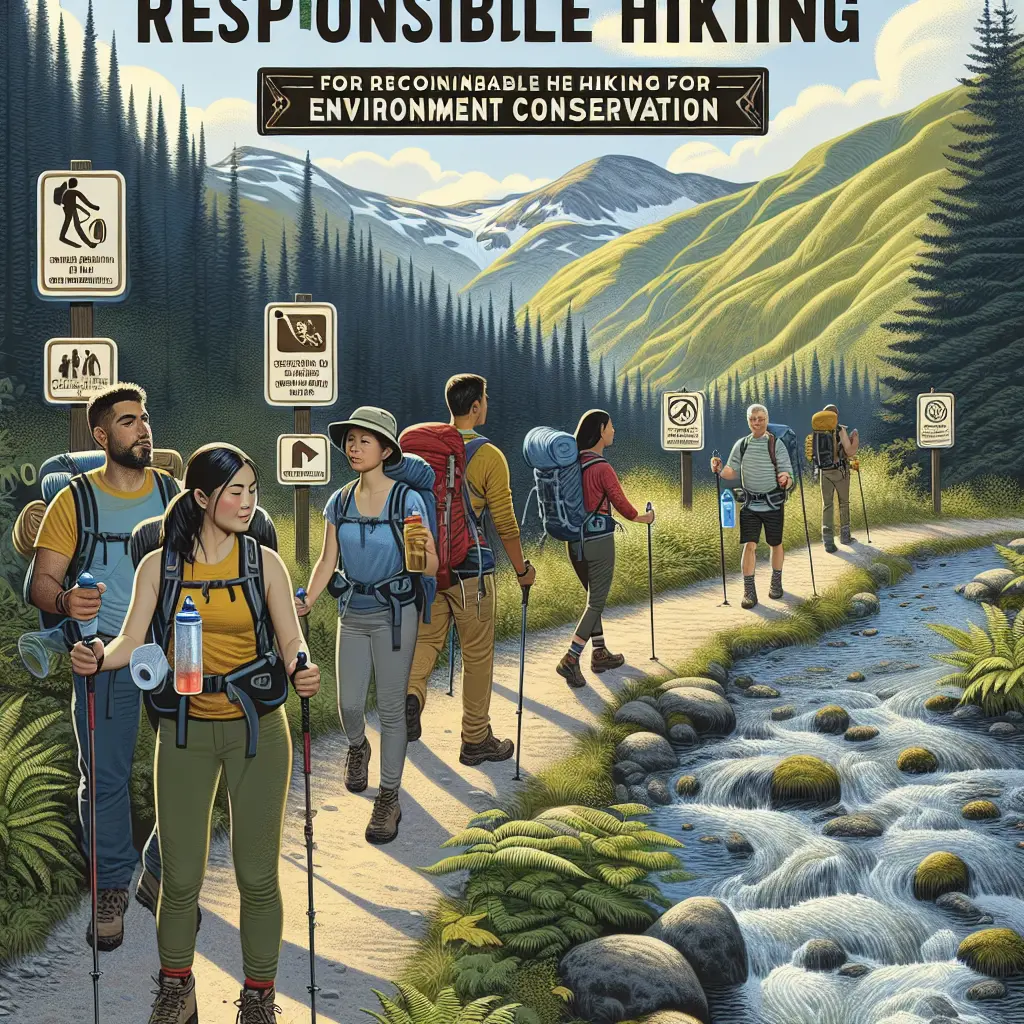
In the world of hiking, the thrill of exploring pristine trails and immersing oneself in nature's bounty is truly unmatched. However, as the popularity of hiking continues to surge, the pressing need for sustainable hiking practices to preserve these natural landscapes becomes increasingly critical. Today, let’s delve into how we can adopt eco-friendly hiking habits that not only enhance our outdoor experiences but also safeguard the environment for future generations.
Understanding the Impact of Hiking on Natural Landscapes
Hiking is more than just a recreational activity; it's a privilege that allows us intimate encounters with nature. Yet, our footprints can lead to significant ecological disruptions if not managed responsibly. Soil erosion, vegetation damage, water pollution, and wildlife disturbances are some adverse effects caused by irresponsible hiking practices. This underscores the importance of adopting low-impact and sustainable trekking behaviors to mitigate these impacts.
Adopting ‘Leave No Trace’ Principles
The cornerstone of responsible hiking, 'Leave No Trace' (LNT), outlines seven principles aimed at minimizing outdoor activities' environmental impact. These include planning ahead, disposing of waste properly, leaving what you find, minimizing campfire impacts, respecting wildlife, and being considerate of other visitors. Embracing these principles ensures that we enjoy nature without harming it, epitomizing the essence of eco-conscious hiking.
Innovative Gear for Sustainable Hiking
The advent of technologically advanced hiking gear is reshaping how we approach sustainable hiking. Recently, a groundbreaking innovation in hiking gear was announced: $5,000 exoskeleton pants designed to enhance hiking efficiency by supporting leg movement and reducing fatigue. These motorized pants promise to make strenuous hikes more accessible while potentially reducing the off-trail wanderings that can damage delicate ecosystems. You can read more about this development here.
Green Hiking Tips to Enhance Trail Preservation
Practicing green hiking tips is crucial for trail preservation. Sticking to marked trails prevents soil erosion and protects undergrowth. Carrying reusable water bottles, avoiding single-use plastics, and using biodegradable soaps minimizes waste and pollution. Furthermore, educating oneself about the local flora and fauna enhances our understanding and appreciation, fostering a deeper commitment to hiking conservation.
Recent Challenges in Hiking Conservation
Despite these efforts, challenges remain. Recent incidents like the rescue of 13 hikers who got lost amid high heat underscore the need for better preparation and awareness among hikers. Similarly, the tragic news of three hikers dying in Utah parks during extreme temperatures highlights the risks associated with unpreparedness and possible environmental distress. These incidents can be further explored here and provide critical lessons in environmental hiking practices.
Impact of Climate Change on Hiking Practices
Climate change is altering landscapes and weather patterns, making responsible hiking even more pertinent. Rising temperatures necessitate carrying sufficient water to prevent dehydration, a simple yet crucial aspect of responsible hiking. Moreover, understanding and respecting seasonal wildlife patterns influenced by climate change can prevent disturbances and promote coexistence.
Community Involvement in Nature Preservation Hiking
Community involvement plays a pivotal role in sustaining hiking environments. Local hiking clubs often engage in trail maintenance and clean-up drives that help in protecting natural landscapes. Participating in or donating to such initiatives can amplify conservation efforts and foster a community spirit geared towards sustainable outdoor ethics.
Educational Outreach for Sustainable Hiking Habits
Educational outreach is vital for instilling sustainable hiking habits among new and seasoned hikers alike. Workshops, guided hikes focusing on LNT principles, and online resources can dramatically improve awareness and implementation of eco-friendly hiking practices. Organizations like the Sierra Club offer extensive resources that can be accessed here.
The Role of Technology in Eco-Friendly Hiking
Technology also serves as a boon for sustainable trekking. Applications like Apple Maps are continually updated to provide detailed trail maps that help hikers stay on designated paths, reducing the chances of trail damage. The latest updates in iOS 18 enhance this functionality, which you can check out here.
Concluding Thoughts on Sustainable Hiking
As we lace up our boots to explore the great outdoors, it's imperative to remember that our actions have consequences. By practicing low-impact hiking, adhering to trail preservation guidelines, and embracing technology for better route management, we contribute to the larger goal of hiking conservation. Every step taken with mindfulness ensures that the breathtaking vistas and rugged trails we cherish today will delight and inspire future generations.
In closing, whether you're trekking through the rolling hills or scaling rugged terrains, remember that the beauty of nature is a collective treasure that demands our respect and protection. Let's stride forward with a commitment to hike without harm, ensuring our footprints lead only to a sustainable future.
Happy trails,
Garrett Mitchell